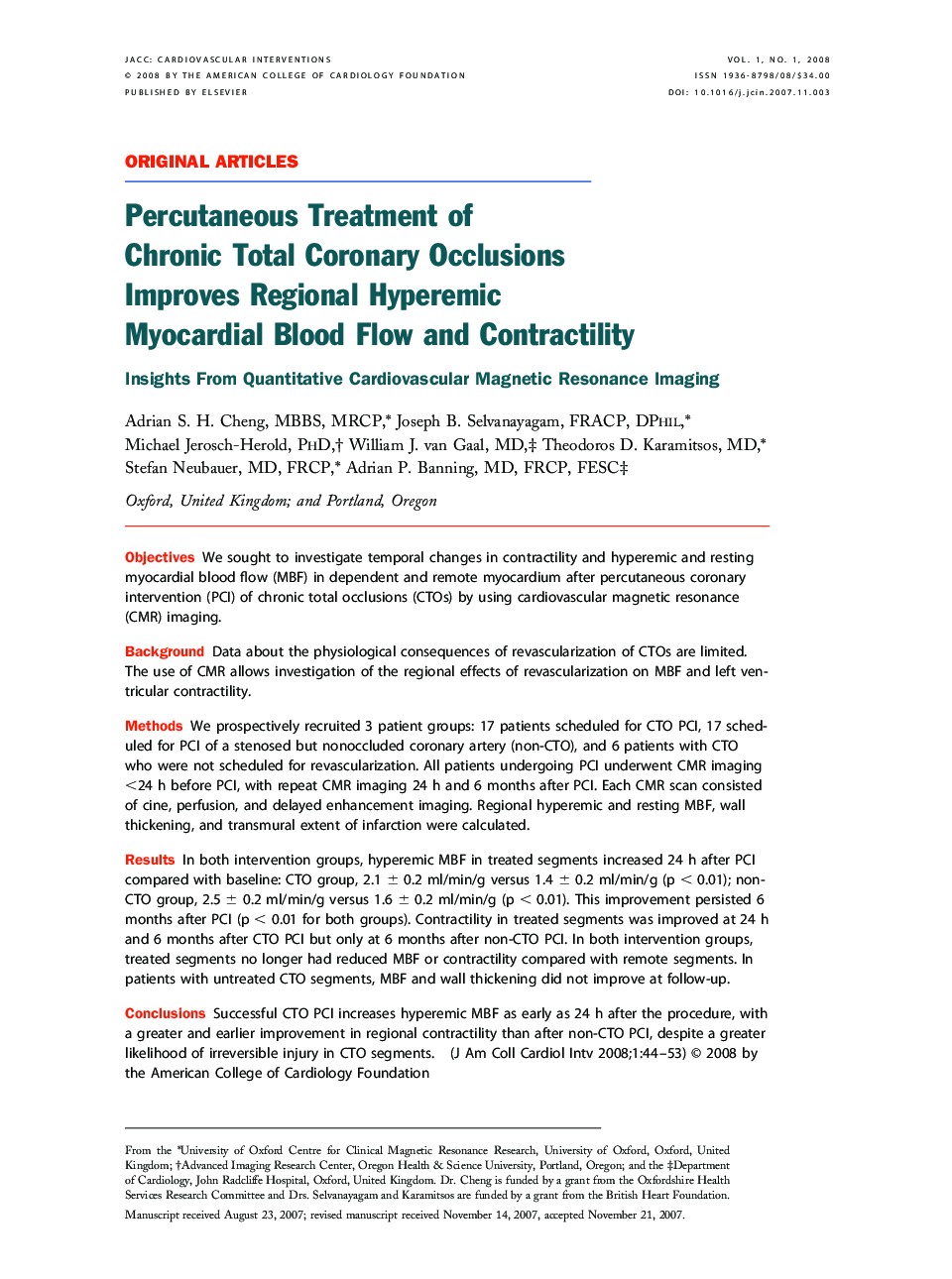| کد مقاله | کد نشریه | سال انتشار | مقاله انگلیسی | نسخه تمام متن |
|---|---|---|---|---|
| 2941936 | 1177093 | 2008 | 10 صفحه PDF | دانلود رایگان |

ObjectivesWe sought to investigate temporal changes in contractility and hyperemic and resting myocardial blood flow (MBF) in dependent and remote myocardium after percutaneous coronary intervention (PCI) of chronic total occlusions (CTOs) by using cardiovascular magnetic resonance (CMR) imaging.BackgroundData about the physiological consequences of revascularization of CTOs are limited. The use of CMR allows investigation of the regional effects of revascularization on MBF and left ventricular contractility.MethodsWe prospectively recruited 3 patient groups: 17 patients scheduled for CTO PCI, 17 scheduled for PCI of a stenosed but nonoccluded coronary artery (non-CTO), and 6 patients with CTO who were not scheduled for revascularization. All patients undergoing PCI underwent CMR imaging <24 h before PCI, with repeat CMR imaging 24 h and 6 months after PCI. Each CMR scan consisted of cine, perfusion, and delayed enhancement imaging. Regional hyperemic and resting MBF, wall thickening, and transmural extent of infarction were calculated.ResultsIn both intervention groups, hyperemic MBF in treated segments increased 24 h after PCI compared with baseline: CTO group, 2.1 ± 0.2 ml/min/g versus 1.4 ± 0.2 ml/min/g (p < 0.01); non-CTO group, 2.5 ± 0.2 ml/min/g versus 1.6 ± 0.2 ml/min/g (p < 0.01). This improvement persisted 6 months after PCI (p < 0.01 for both groups). Contractility in treated segments was improved at 24 h and 6 months after CTO PCI but only at 6 months after non-CTO PCI. In both intervention groups, treated segments no longer had reduced MBF or contractility compared with remote segments. In patients with untreated CTO segments, MBF and wall thickening did not improve at follow-up.ConclusionsSuccessful CTO PCI increases hyperemic MBF as early as 24 h after the procedure, with a greater and earlier improvement in regional contractility than after non-CTO PCI, despite a greater likelihood of irreversible injury in CTO segments.
Journal: JACC: Cardiovascular Interventions - Volume 1, Issue 1, February 2008, Pages 44–53